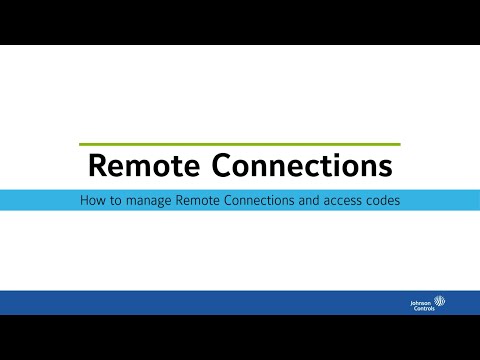Description When enabling Remote Connectivity for an exacqVision Server on the Remote Connections page within the Client, the Connectivity Status column displays an error. Issue Examine the message displayed in the Connectivity Status column on the Remote Connections page or the exacqVision System Logs. Disabled: SBS: listener stopped 1-CANCELLED May be caused by missing frpc… Continue reading Remote Connectivity Fails to Connect to Switchboard
Tag: Remote Connectivity
exacqVision Mobile – Getting Started & Server Connections
This video shows users how to connect to exacqVision Servers and manage Server connections.<br><br> Chapters:<br>00:00 Intro<br>00:25 Connecting to your first server<br>00:39 Connecting with an access code<br>01:12 Connecting using a URL<br>01:34 Quick View<br>02:05 Connecting to additional servers<br>02:22 Managing server connections<br> <br>
exacqVision – Remote Connections
exacqVision 24.09 introduces the Remote Connections feature. This video for system administrators discusses the benefits of using Remote Connections as well as creating access codes for mobile users. This feature can be used with exacqVision Mobile 24.09 and above.<br><br> Chapters:<br>00:00 Intro<br>00:33 Features of Remote Connections<br>00:48 Network architecture<br>01:54 Enable Remote Connectivity in the Client<br>02:17 Mobile Optimized… Continue reading exacqVision – Remote Connections
Accessing exacqVision from Tablets and Phones using the exacqVision Mobile App
Overview exacqVision Mobile receives live and recorded video from the exacqVision Server The exacqVision Mobile app allows you to use Apple or Android tablets and smartphones to view live video from an exacqVision Server, search for recorded video, and more. To access your exacqVision server over the internet from exacqVision Mobile, additional configuration may be… Continue reading Accessing exacqVision from Tablets and Phones using the exacqVision Mobile App
How to Determine if a Mobile User is Connected Through Remote Connections
Description The exacqVision Mobile application provides the ability to connect straight to the exacqVision Server service, without the use of the exacqVision Web Service, when using server version 24.09 and higher. This connection can be made directly or by means of the Remote Connections feature. This article instructs users on how to determine which method… Continue reading How to Determine if a Mobile User is Connected Through Remote Connections
2024-03 March Exacq Release Training
This training covers the following topics: Quick Add – Requires exacqVision Server and Client 24.03 or higher. Supports only Illustra Flex and Pro Gen 3/4 cameras. Architecture changes – Changes made in how the new exacqVision Mobile app connects to exacqVision Server and when exacqVision Web Service is still required. Remote Connectivity – Provided for… Continue reading 2024-03 March Exacq Release Training
Remote Connections
exacqVision Server and Client versions 24.09 introduce our Remote Connections feature. This added feature currently only supports exacqVision Mobile. Connections for the Desktop Client, Exacq Mobile 3, or Web Client remain unchanged. Products What benefit does Remote Connections provide? Why don’t I have to configure port forwarding? Traditionally, users outside of a LAN wishing to… Continue reading Remote Connections
Remote exacqVision Connection Diagrams
The method used for connecting to an exacqVision system from outside the LAN it resides on will depend on your network configuration and use case. Examples are provided below based on each method. Remote Connections Remote Connections are supported by exacqVision Server/Client 24.09 and above to facilitate connections from the exacqVision Mobile app. When considering… Continue reading Remote exacqVision Connection Diagrams
Exacq Software/Service Connections Diagram
This diagram illustrates how the various Exacq applications work together and the ports used to communicate. Internal (LAN) Remote (WAN) In cases where external users plan to connect for remote monitoring, you will may need to configure port forwarding on your router to allow traffic on those ports to pass through. exacqVision provides several ways… Continue reading Exacq Software/Service Connections Diagram

